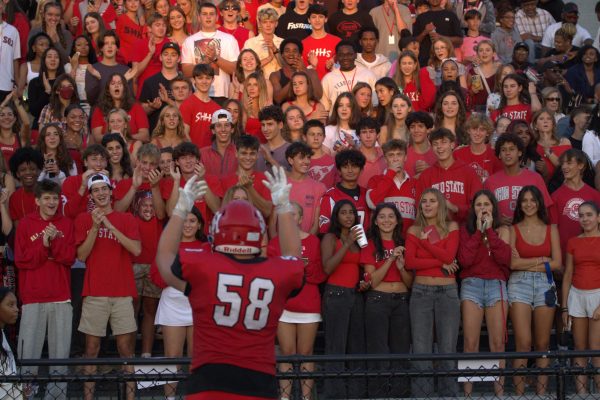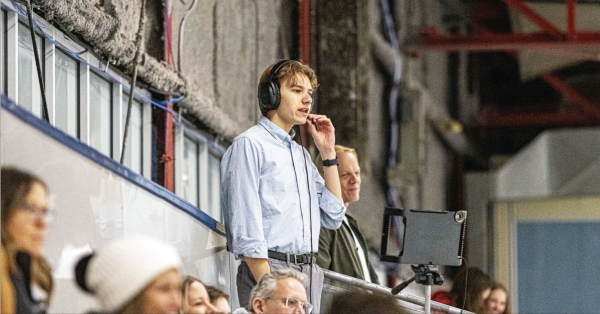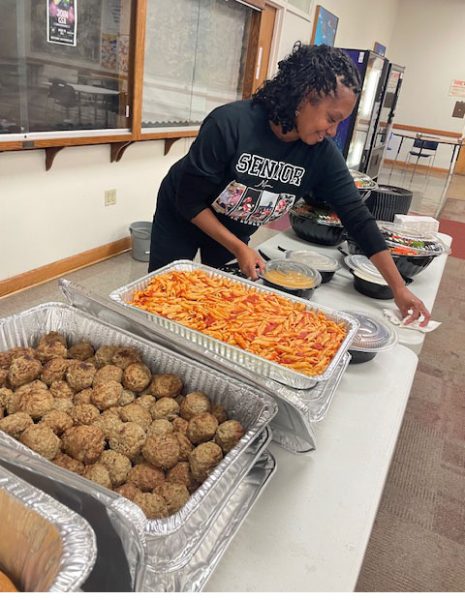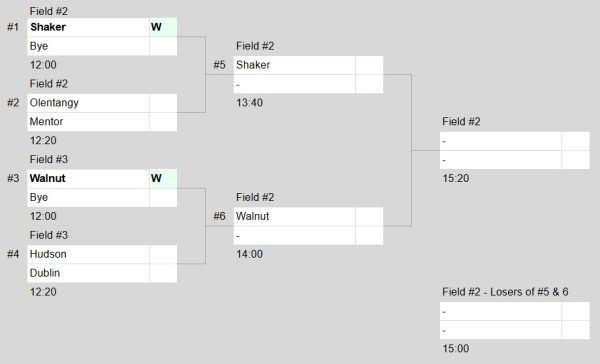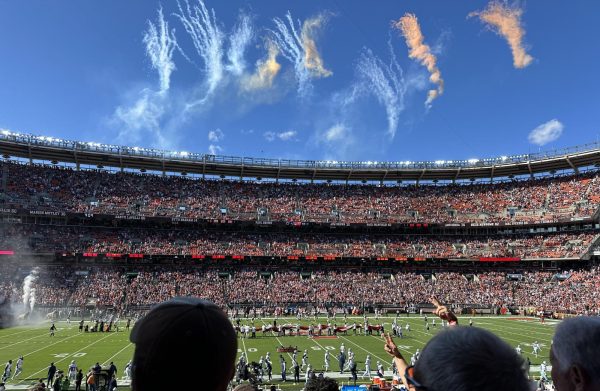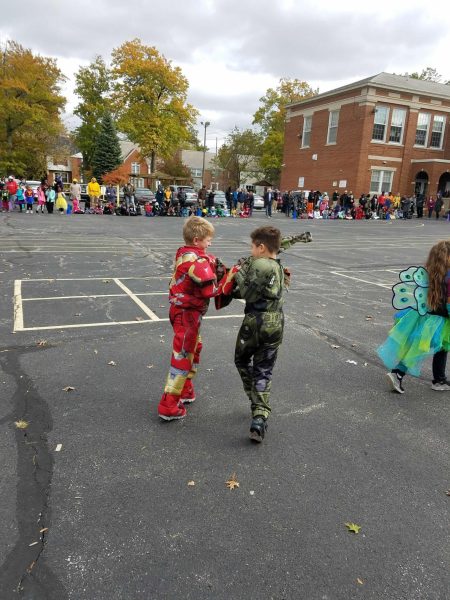Drunken Insults, Racial Slurs . . . It must be Opening Day in Cleveland
![2013 Shaker graduates Jack Nemeth and Andrew Rossman hold posters at the annual Chief Wahoo protest. Protesters compared the Chief Wahoo logo to any other bigoted mascot, saying that it promotes racist values and furthers disrespect of Native cultures. “I went there [to the protest] because I wanted to show my disapproval because we had the Holocaust, and [our] people were dehumanized by these caricatures,” said Nemeth. “And this propaganda and this Chief Wahoo is the same thing because in America we took their land--[the land of] people who didn't really have choice of us coming there.”](https://shakerite.com/wp-content/uploads/2014/05/Nemeth-and-the-Chief.jpg)
2013 Shaker graduates Jack Nemeth and Andrew Rossman hold posters at the annual Chief Wahoo protest. Protesters compared the Chief Wahoo logo to any other bigoted mascot, saying that it promotes racist values and furthers disrespect of Native cultures. “I went there [to the protest] because I wanted to show my disapproval because we had the Holocaust, and [our] people were dehumanized by these caricatures,” said Nemeth. “And this propaganda and this Chief Wahoo is the same thing because in America we took their land–[the land of] people who didn’t really have choice of us coming there.”
Editor’s Note: After years of protest from the Native American community, The Cleveland Indians announced yesterday that the organization will consider changing the team name. In April 2014, Former Shakerite Editor in Chief Marcia Brown (’15) wrote about the team’s former mascot, Chief Wahoo, and the annual protests that greeted opening day in Cleveland. Brown graduated from Princeton University in 2019 and is a second-year writing fellow for the American Prospect. She covers immigration, labor and incarceration and recently published an authoritative account of the demise of the Cleveland Plain Dealer.
As Cleveland geared up for another Indians season, others prepared for the annual protest against the use of Chief Wahoo. Each year on opening day, a group of activists gather outside the gates of Jacobs—sorry—Progressive Field. The mascot doesn’t quite reflect the stadium name.
“I really love the community and I want to make it more of a place of equality for everyone,” junior Sophy Warner said. Warner loves the diversity of both Shaker and Cleveland communities. She spoke warmly about the participants in the protest and reserved judgement of those who yelled in her face.
It was Warner’s second year with the protesters, who stood in the pouring rain and progressively colder weather from 1 p.m. until the game started a few hours later. It was a smaller turnout this year than in previous years–about 20 people. Nevertheless, the protest earned the most press this year, according to Warner. Indeed, the use of Native American mascots has drawn more media attention this year; the the Plain Dealer editorial board condemned the use of Chief Wahoo, and the Washington Redskins owner’s fierce defense of his team’s mascot has been prominent.
The American Indian Movement formed in 1973 and began these annual opening day protests. April 4, 2014 was just a continuation of those efforts. Warner attributes this year’s smaller numbers to a shrinking Native American population in Cleveland.
The intensity of the opposition has not diminished, however.
“We’d stand, and sometimes people would come up and ask questions or yell at you,” Warner said. “Some people would stop and look and read [our posters]. Some people would take pictures.”
Other onlookers weren’t as open-minded. Some yelled insults in the protesters faces. “Lots of the [yellers] were drunk, but some of them were definitely not,” Warner said. “But they’d be with their buddies and they’d yell, ‘Keep the chief!’”
The hecklers didn’t leave it at that. “Some people said, ‘You’re not even Native American. Why are you doing this?’” Warner said. She retorted: “I think it’s important that anyone who is being oppressed should be defended.”
Warner has always been interested equality. While not involved in the Student Group on Race Relations, she is a part of Gay-Straight Alliance and other groups centered on equality. “The changing of the name is so important for the Native Americans, and I think it’s something that should be changed because it looks bad for Cleveland, too,” she said.
Warner isn’t the only Shaker student who has participated in these protests. Jack Nemeth, a Shaker graduate, participated in 2013.
Nemeth is adamant that Chief Wahoo has the same racial implications as any other slur. “What if it was called the Cleveland Negroes, and people painted their faces black? Or if it was called the Cleveland Jews and people put big noses on? And it’s really hard to imagine that, too,” he said. The Indians logo dehumanizes Native Americans, the people “we should have utmost respect for,” Nemeth said.
The National Association for the Advancement Colored People, mirroring Nemeth’s opinion, passed a resolution concerning mascots and the treatment of Native peoples in the media. “The use of Native American people, images, symbols and cultural and religious traditions as sports names, logos and mascots perpetuates racist stereotypes and undermines the self-determination and dignity of Indian people; and. . .Therefore, Be It Resolved, that the National NAACP calls upon all members and friends to refrain from purchasing items with Native American sports team logos, and to cross out such logos on merchandise already in their possession,” the resolution states.
These widespread harms to native peoples’ self-esteem and cultural traditions are well-documented by several sources.
The National Congress of American Indians names “Ending Harmful Mascots” as a priority, one they’ve been working on for more than 45 years. The congress cites such mascots as most harmful for Native youth. “When exposed to these images, the self-esteem of Native youth is harmfully impacted, their self-confidence erodes, and their sense of identity is severely damaged,” the organization states on its website. Not only is self-esteem lost, but suicide rates are higher for Native Americans than any other ethnic group, at 14.3 per 100,000 people, according to the National Institute of Mental Health. The Native American population is 5.2 million, according to the 2012 Census.
Warner allowed that there has been some progress. The Chief Wahoo logo today is less derogatory than in the past. The grinning mascot uses less pronounced “native” features and its skin is an unnatural red. The ballclub also uses a “C” for Cleveland in some of its merchandise. “The symbol has made a lot of money, but the Native Americans don’t see this money,” Warner said. “The ballpark sees the money.” Warner added that the Cleveland Native Americans cannot afford to fund their pow wows, traditional gatherings of Native American people. Nowadays, native and non-native people meet to celebrate the importance of Native American tradition.
“I think a lot of the problem is a lot of people don’t understand. So I just try to explain to people why [the logo] is not a good representation and it’s demeaning,” Warner said. “Sometimes people won’t listen, but other times they will.”
The American Psychological Association denounced the use of Native American mascots. Citing research that shows the detrimental effects of such mascots, and how their use furthers racist values, the APA encourages the “immediate retirement” of such symbols and passed a resolution. “Thepolicy is not necessarily that they shouldn’t be used but that they should be retired,” said Alberto Figueroa-Garcia, assistant director of the APA Office of Ethnic Minority Affairs. “[There is] a detrimental impact for children — not just Native American children. The research suggests that retiring those mascots is good for everyone.”
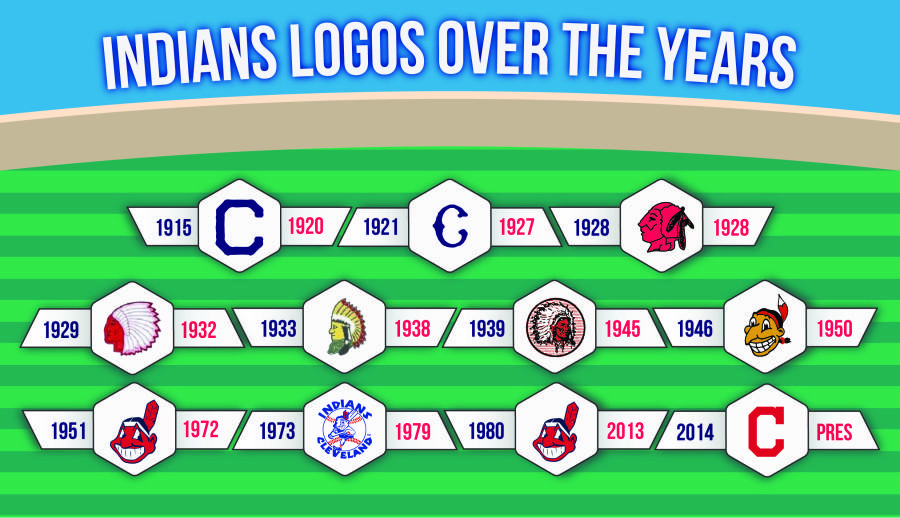 In 2007, the American Sociological Association released a similar resolution, objecting to the use of such mascots as they “reflect and reinforce misleading stereotypes of Native Americans in both past and contemporary times.”
In 2007, the American Sociological Association released a similar resolution, objecting to the use of such mascots as they “reflect and reinforce misleading stereotypes of Native Americans in both past and contemporary times.”
Describing the protesters, Warner said that the leaders of the protest are Native American, but many of the other protesters are not. Many were college students, including some from Case Western Reserve University.
Nemeth said he participated in the protest because of his own identity.
“I wanted to show my disapproval because we had the Holocaust, and [our] people were dehumanized by these caricatures,” said Nemeth. “And this propaganda and this Chief Wahoo is the same thing because in America, we took their land–people who didn’t really have choice of us coming there.”
During the protest, Warner encountered opinions she’d never experienced before. Describing one poster protesters used, showing a Jewish person whose features were exaggerated saying “This is a symbol of the Holocaust.”
“One person came up to me and said that the Holocaust never happened and that there’s never been genocide,” Warner said.
Nemeth experienced similar startling reactions. Using a similar sign showing a Jewish person, Nemeth met Jews who disagreed completely with him. Nemeth, who is Jewish, bases much of his anti-Chief Wahoo stance on his own experience.
“There was a kid that I knew, who was a Jewish kid and he was more Jewish than I was,” Nemeth said. “He was very upset because he was like, ‘How could you show so much disrespect on Holocaust day,’ and I said, ‘How could you show that much disrespect on Holocaust day [to] Native American people who are living there.”
He cites widespread support for the Indians team in the Jewish community in Cleveland, but believes the community isn’t sensitive enough. “It seems like Jews forget the Holocaust movement—not—[that they’re] self-hating, but to me it shows a lot of ignorance and a lack of a ability to logically think about how racism is affecting people today.”
Like most protesters, Nemeth believes that the times are changing quickly, just as people’s attitudes toward such causes as gay marriage. “In 200 years our technology changed, and people’s attitudes are changing very fast, ideas change very fast,” he said. “Why is having a logo more important than respecting a people?”
Even President Bill Clinton, before the objections were widespread, rejected the Indians’ mascot. In 1994, when he threw out the first pitch at Progressive Field, he used “a home-team cap and jacket of a style seldom seen after the Indians reinstituted a logo into the 1970’s featuring a Chief Wahoo,” the New York Times wrote. “That made Mr. Clinton the only one on the field adorned in the old-fashioned block C, a step that a White House aide said he had taken ‘in recognition of the sensitivities’ aggravated by a team that still calls itself the Tribe.”
Twenty years later, the team still uses the mascot, fans still defend it and protestors’ objections haven’t faded.
Nemeth’s impression of the protestors in 2013, was similar to Warner’s. “First, it’s well known that people go to pre-game, but people were walking by [and] yelling, ‘You’re not one of them,’ ‘We should have killed the rest of you’ and ‘The Fighting Irish is outrageous, too,’ ” Nemeth said.
“It was just very disturbing to me to see that probably out of the 10 people I talked to, one person stopped to have civilized conversation with me.”
This story appeared in Volume 84, Issue 4 (April 2014) of The Shakerite on pages 28-31.

